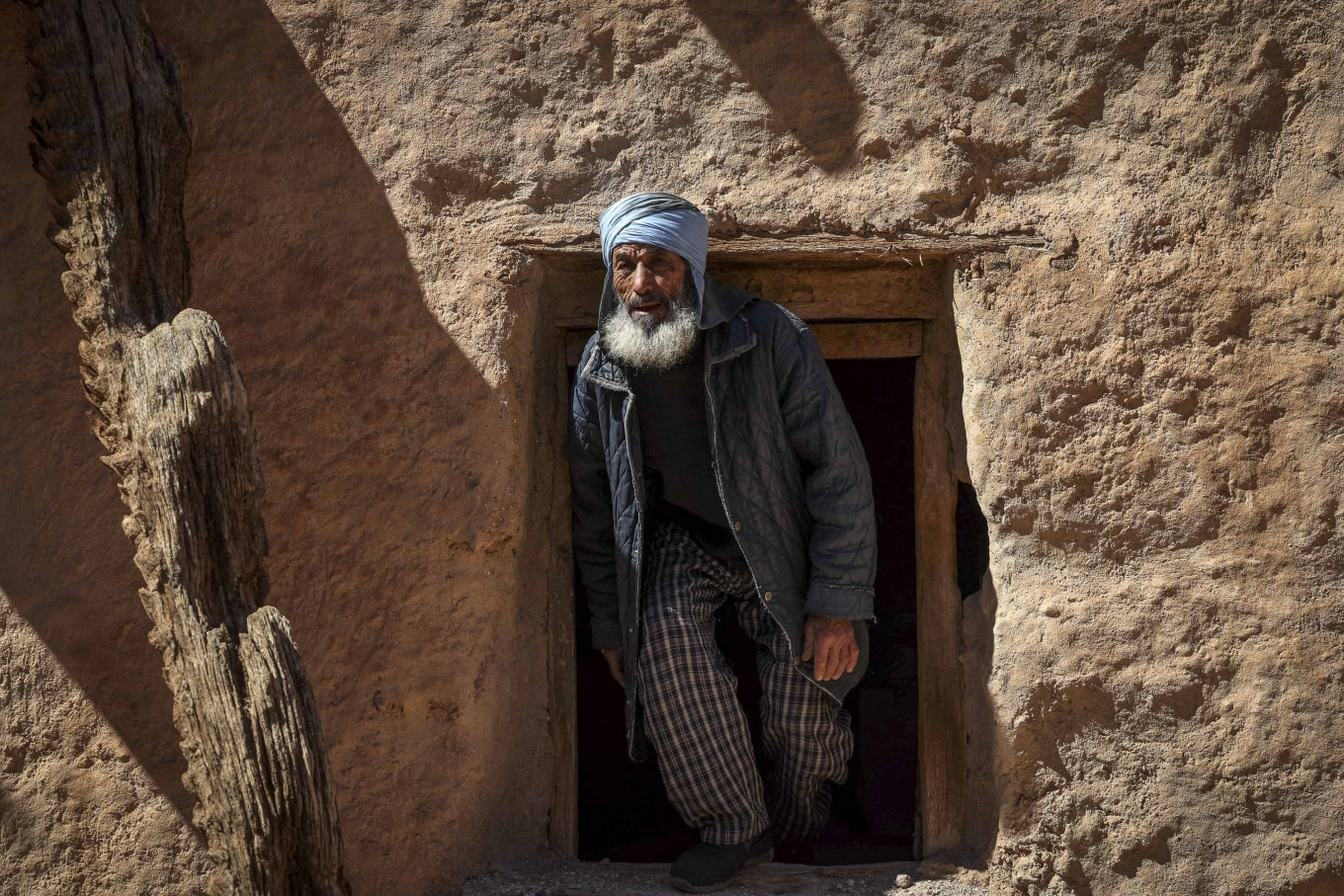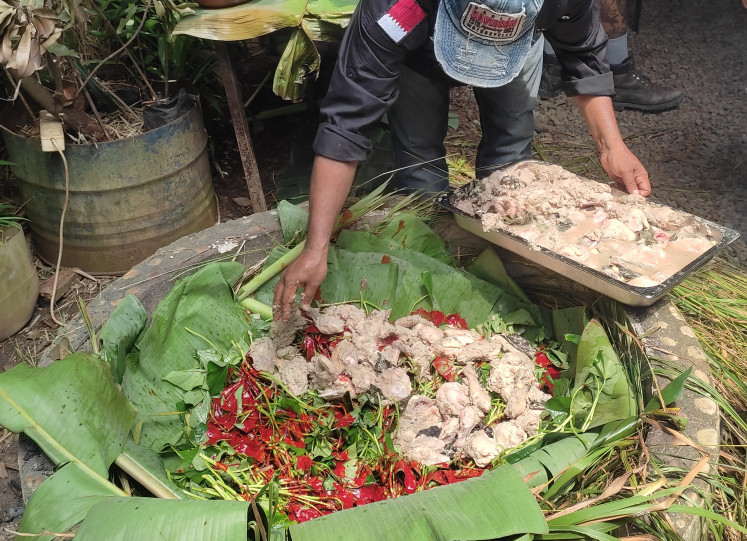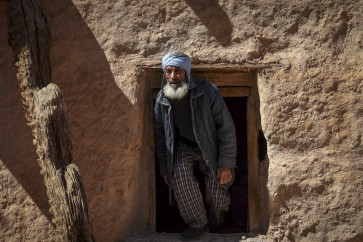Popular Reads
Top Results
Can't find what you're looking for?
View all search resultsPopular Reads
Top Results
Can't find what you're looking for?
View all search resultsMoroccan villagers keep communal store tradition alive
The imposing, fully functional structure, likely built in the 18th century and restored in 2012, is still used by local residents to store and protect their produce.
Change text size
Gift Premium Articles
to Anyone
 Guardian Lahcen Boutirane walks at the ancient collective granary of Ait Kine village in Morocco's region of Tata on March 1, 2023. High in the rugged hills some 460 kilometres (285 miles) south of the capital Rabat, Ait Kine is home to one of country's few remaining collective granaries, or agadir in Amazigh -- Morocco's Berber language.
(AFP /Fadel Senna )
Guardian Lahcen Boutirane walks at the ancient collective granary of Ait Kine village in Morocco's region of Tata on March 1, 2023. High in the rugged hills some 460 kilometres (285 miles) south of the capital Rabat, Ait Kine is home to one of country's few remaining collective granaries, or agadir in Amazigh -- Morocco's Berber language.
(AFP /Fadel Senna )
S
urrounded by olive and palm trees in a Moroccan mountain village, a centuries-old collective granary preserves the ancient practices of the Amazigh culture.
"The traditions are vanishing, but not here," said proud village elder Hossine Oubrahim, in Ait Kine in the Anti-Atlas mountains.
High in the rugged hills some 460 kilometres (280 miles) south of the capital Rabat, Ait Kine is home to one of country's few remaining collective granaries called agadir in Amazigh, Morocco's Berber language.
The imposing, fully functional structure, likely built in the 18th century and restored in 2012, is still used by local residents to store and protect their produce.
"We were raised on the tradition of storing our grains, dried fruit, oil and valuables there," recalled Oubrahim, in his 70s and wearing an indigo-coloured tunic.
"And we continue to respect it."
The village's granary is a "monument" that "represents our community spirit", said Abdelghani Charai, a 60-year-old merchant who returned to his ancestral home in Ait Kine after years away.


















